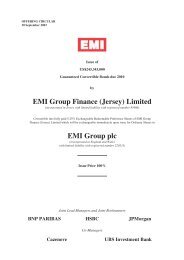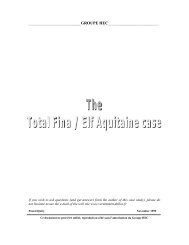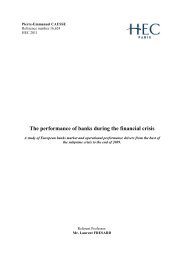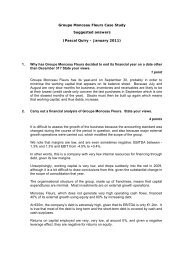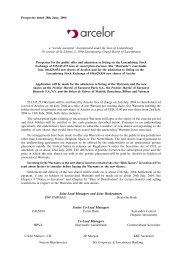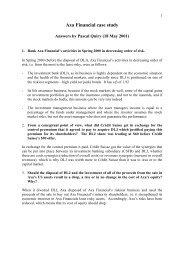Thesis_gd_final_vers.. - Vernimmen
Thesis_gd_final_vers.. - Vernimmen
Thesis_gd_final_vers.. - Vernimmen
You also want an ePaper? Increase the reach of your titles
YUMPU automatically turns print PDFs into web optimized ePapers that Google loves.
monitoring costs incurred in the framework of lending relationship can be spread on more<br />
products. Moreover information can also be re-used across the different product lines in order to<br />
better assess client-specific risks and improve the risk-return profile of the bank’s activities. The<br />
existence of scope economies based on relationship increased the competition for gaining new<br />
customers. It thus has become widespread to offer underpriced corporate loans in order to attract<br />
new customers (Calomiris (2000)). The measure of profitability is consequently no more assessed<br />
on an individual transaction basis, but on a relationship basis by evaluating the resources devoted<br />
to a client against the revenues that the same client generates in the form of interest payments and<br />
fees for the bank.<br />
The best illustration of the existence of scope economies based on information-sharing and<br />
informational advantage comes from the entry of commercial banks into the security underwriting<br />
business though section 20 subsidiaries in the 1990s. Pappaioannou (2008) shows that commercial<br />
banks entered the underwriting business successfully. Their performance is particularly strong in<br />
debt underwriting and Yankee underwriting where they captured on average 58% and 60%<br />
respectively of the market over 2001-2004 <strong>vers</strong>us only 19% and 15% respectively over 1990-1996.<br />
Their market share in equity and in municipal bonds underwriting also surged from 5% and 12%<br />
respectively over 1990-1996 to 40% and 36% respectively over 2001-2004. This gain in market<br />
share was mostly at the expense of independent investment banks. The top-6 bulge bracket<br />
investment banks also experienced a decline in market share over the 1990s and early 2000s except<br />
for equity offerings where they reinforced their positions overtime. Even though commercial<br />
banks had an information advantage due to their lending relationships with securities issuers this<br />
did not translate into significantly higher market share gain for high information content securities,<br />
for which the price discovery process is more complex. However, they were able to charge lower<br />
gross spread on debt underwritings according to Rotten and Mullineaux (2002), and the<br />
underpricing was reduced even more for non-investment grade bonds, which accredits the<br />
informational advantage of commercial banks resulting from scope economies. Concerning the<br />
equity underwriting market, Pappaioannou (2008) findings also suggest that small-sized first-time<br />
issuers for whom information asymmetry is greater tend to favour commercial banks with which<br />
they have lending relationships, rather than investment banks. More generally a bank with a<br />
lending relationship with an issuer is more likely to underwrite debt or equity issues (Barath et al.<br />
(2007).<br />
The product di<strong>vers</strong>ification had a dramatic impact on the banking industry as a whole, even<br />
though banks from different sizes have been impacted to different degrees. Berger and Mester<br />
(2003) found that a larger product scope of commercial banks translated into both a worsening of<br />
cost productivity and an improvement of profit productivity from 191 to 1997. This means that<br />
- 10 -



